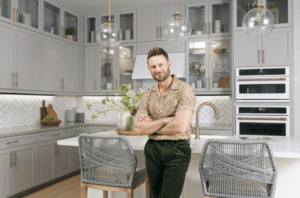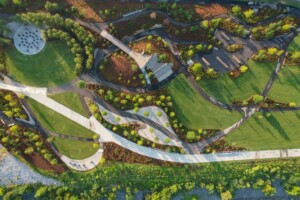The past few years have seen a resurgence in the detail and focus people put into interiors. Whether that means turning a home into a sanctuary or a health clinic into a welcoming place for care, the world of interiors continues to be rich and ever-evolving. This year, the projects that resonated with us artfully balanced materials, colors, and compositions (especially those that contrast), while reminding us that opportunities in interior architecture are still being explored and expanded, from designing new ways to travel to prioritizing social contact and playfulness in high-density residential buildings. To reflect back on another year coming to a close, here are the interiors that defined our 2023.

HYBRID and Palma bridge nature and comfort at NICO Sayulita, a new hospitality experience in Mexico
NICO Sayulita is a new hospitality experience by interdisciplinary Seattle-based studio HYBRID and Mexico City’s Palma. Available to be rented as a whole complex for a group or family or as suits for a solo or couple travelers, the space appears as if deconstructed, comprised as it is from concrete grids. The industrial color palette is complemented by a plenty of green foliage and wide openings that look out into the canopy of jungle. The architects crafted the space to embody a tranquil stay with a smooth concrete structures, warm wood, steel, and green accents. The design bridges multiple dualities: nature and comfort, private and public, and ancient and modern.

Timothy Godbold designs himself a sensuous villain lair in the Hamptons
Interior designer Timothy Godbold transformed the once traditional 1973 residence by architect Eugene L. Futterman into a strikingly modern lair. As its situated on a wetland, interventions were kept minimal but nevertheless striking. He painted the cedar facade black to accentuate the home’s angular features, converted all the windows to floor-length portals, and added a series of underlit cantilevered bluestone steps that lead to a small deck in front of the home’s entry. Inside, angularity still permeates. Godbold reconfigured the pre-existing fireplace into a stepped-structure, resembling a Mayan ziggurat temple. It’s framed by a short angled wall that leads to a hanging garden, a nod both to the James Bond film Moonraker and the geometric designs of architect Paul Rudolph, whose influences continue to shape the rest of the home.
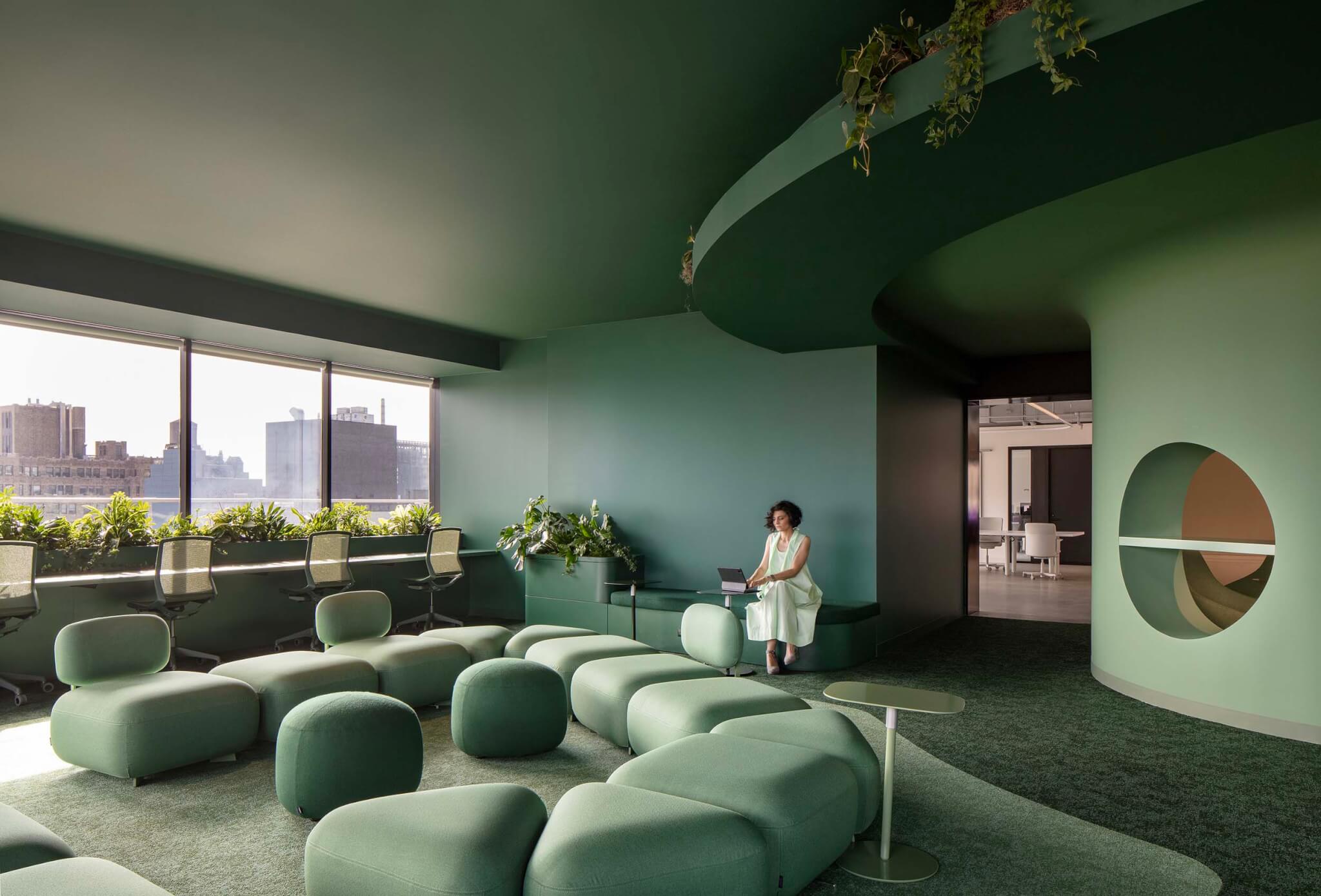
Architecture Plus Information’s vibrant office for Publicis Groupe’s Le Truc is designed to spark creativity
French for “thing-a-ma-jig,” Le Truc—a creative clubhouse within the marketing organization, Publicis Groupe—was in need of a workplace design in their New York flagship that matched its playful persona. To tackle the task, Architecture Plus Information (A+I) created a space that reflects the way the agency thinks. A+I designed a contemporary workplace where employees have the freedom to choose the environment they work and collaborate in. Much like a choose-your-own-adventure book, the array of contrasting workspaces allows workers to choose an environment that suits them, all while heightening the work’s creative process.

Four designers configure a Brooklyn loft for artful inhabitation and exhibition
Designed by Ignacio G. Galán, Jesse McCormick, and Future Projects, this Brooklyn loft is both an apartment and performance space. The fluid function of the space is coupled by an equally shape-shifting layout with all residential rooms banked towards the loft’s entrance, leaving half the floor area open. Private and public tensions arise from the ambiguous programming, which the architects play into. New insertions like the enclosures for the bedroom, bathroom, and kitchen that emerge from the loft’s walls encroach on an otherwise open floorplan. The design employs its carved forms and materiality, like red-stained pine plywood, rough clay plaster, colored MDF, and smoked polycarbonate, to appear more like discrete objects, bringing a level of set design into the residential.
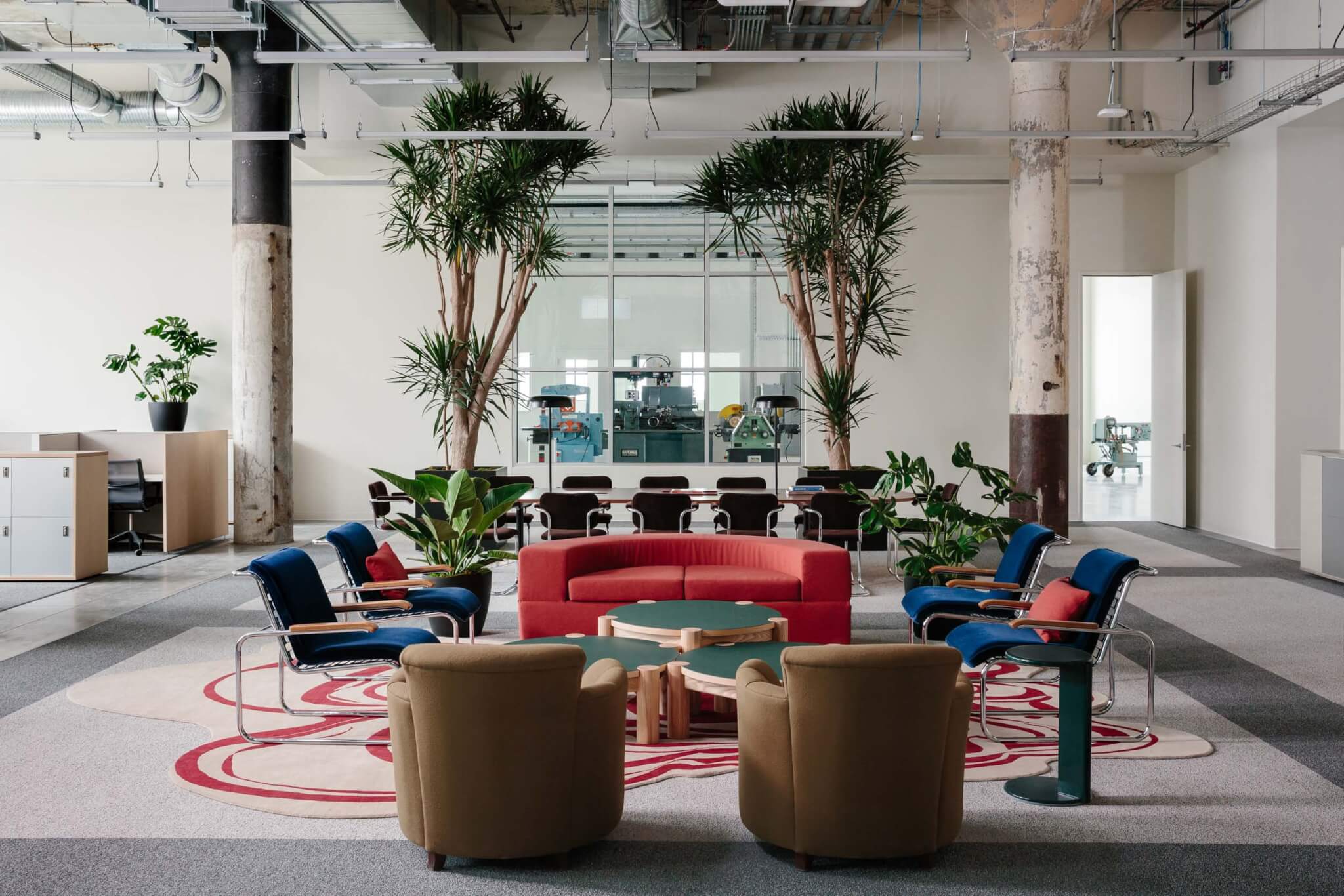
Brooklyn-based CIVILIAN completes its biggest project yet, for Newlab Detroit
After establishing their practice five years ago, husband and wife and cofounders of CIVILIAN, Nicko Elliott and Ksenia Kagner picked up their largest project yet: the interior design of Newlab Detroit, the latest outpost of the innovation hub founded seven years ago in the Brooklyn Navy Yard. The renovation included a pillow-top skylight, creating an atrium that connects all three floors. The first is a 200-seat event space with silent, roll-up doors that open to workshops and studio spaces. The two upper floors are workspaces with both private and communal programming. The interior uses metallic finishes and warm wood tones together, referencing early modern industrial designers as well as Charlotte Perriand.

Ludwig Godefroy offers a Brutalist take on Oaxacan vernacular architecture
This year Ludwig Godefroy completed Casa VO and Casa WO, a series of rentable dwellings radiating around interior gardens. Both are defined by enormous skylights that help let in light to nourish the plants without overheating residents, but these circular cutouts also serve as walls and doorways that cut through the V-shaped structure. All those swoops and curves are more than aesthetic choices. The curves, made of concrete, wisely considers the climate, offering much-needed shade as temperatures climb throughout the day. Its angle are cleverly aligned to guide rain water to a roof garden. In these dwellings, concrete is the star—and makes for an effective Brutalist take on Oaxacan vernacular.

Shift Architecture Urbanism designed cubby beds and smart cores for communal Amsterdam apartments
As a response to a growing number of single and two–person households (instead of larger, more traditional familial arrangements), Amsterdam’s Domus Houthaven is a a 235-unit apartment complex that Shift Architecture Urbanism designed to prioritize efficient and compact living—without sacrificing playfulness or social contact. Each studio apartment maximizes its limited space by compressing secondary spaces and introducing a “smart core” comprised of an alcove bed, kitchen, bathroom, and closet modules. The building’s structure as a series of interconnected blocks helps foster informal gathering, further encouraged through diverse materiality and color: bamboo, wood veneer, ceramic tile, and terrazzo. It falls alongside a suite of bright hues and pastels that promote intimacy among residents. The result is a new typology that not only considers alternative ways of living but also how to do so with and among others.
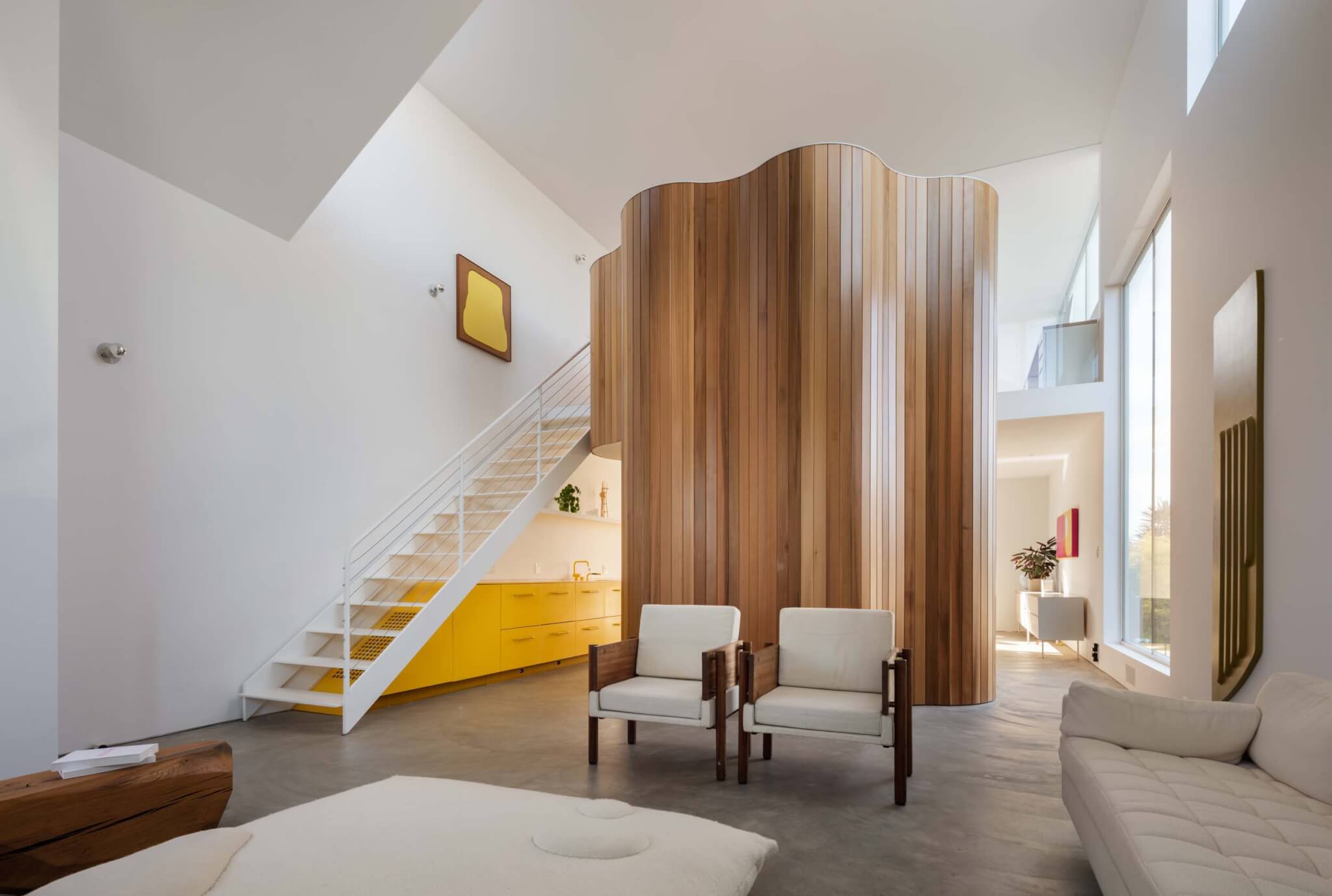
Craig Steely Architecture unites diverse geometry
Clients Stefanie Wenk and Markus Spiering approached California- and Hawaii-based architecture firm Craig Steely Architecture with a boxy, gable-roofed building. This strong geometry inspired the architects to turn the residence into a modern home of almost stepped rectangular volumes that conceal an interior flower tower. The interior is anchored around this structure, defining the choreography and experiential nature of the home. The organic curves contrast against the space’s angular geometry. The linearity of the rectangular windows and gable roof only heightens the circular and semi-circular windows. The clean, contemporary home permeates geometry in various forms, all while referencing the building’s history.
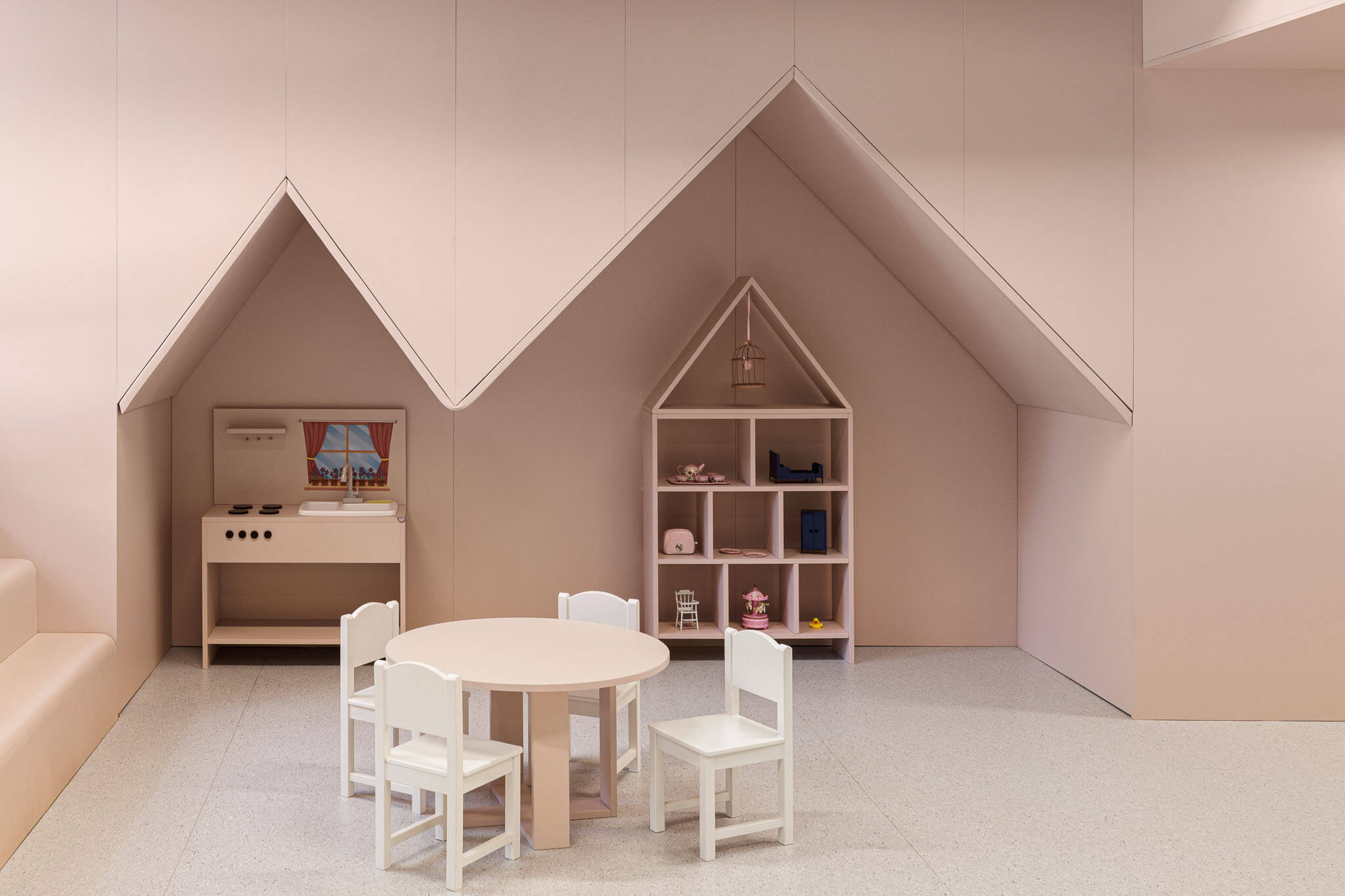
ARG Studio’s ward at Hospital São João is a serene respite for children in treatment
Hospitals often feel cold and clinical. ARG Studio set out to amend this with the colorful interiors of the Pediatric Ward in Hospital São João in Porto, Portugal. The 3,800-square-foot (350-square-meter) multi-room leisure area for young people to play and relax between treatments caters to a playful ambiance to make visits less stressful. As the ward serves toddlers through to teenagers, each room and configuration is whimsical enough to appeal to the youngest while remaining mature enough for older visitors. The different spaces—library, study hall, gym, and play rooms—are each designated by different colors. Tying them together are equally delightful hallways, featuring a stylized 3D kite by Lisbon-based artist Francisca Ramalho to improve the experience young ones have when coming for treatment.
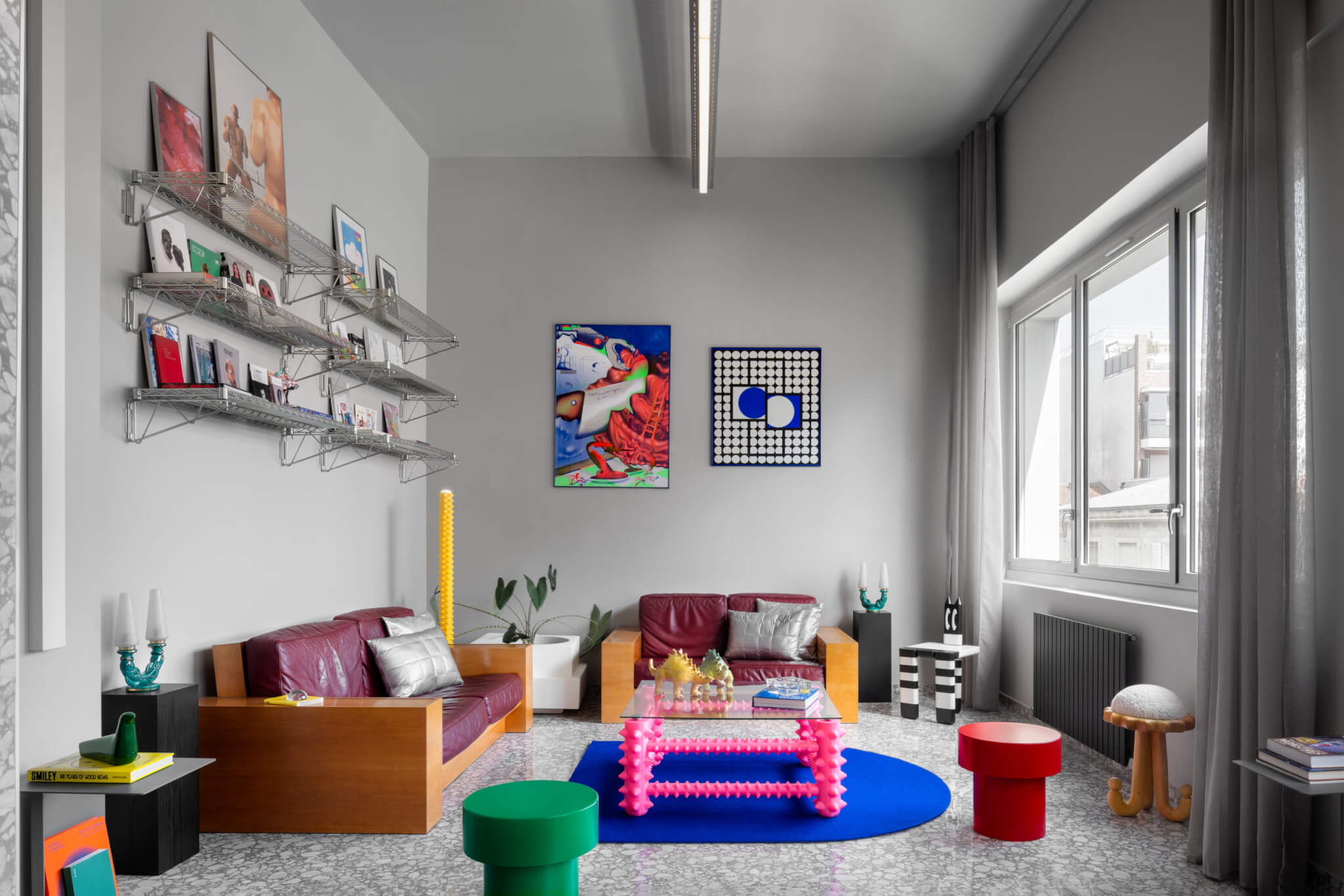
Anthony Authié of Zyva Studio couples eclectic materials and colors in a Paris loft he designed for himself
Anthony Authié, founder of the adventurous Paris-based firm Zyva Studio, designed his and his partner’s loft after an ethos that architecture is not limited to the needs of traditional human bodies, or what he calls “trans design.” As such, the 600-square-foot space is bright and bursting. In one area, gray terrazzo covers the floors before climbing the walls and stairs. It leads to a bright yellow bedroom, situated above a minty green bathroom. The accents are as eclectic as the high-intensity hues, a mix of DIY objects and whimsically spiky hardware.








